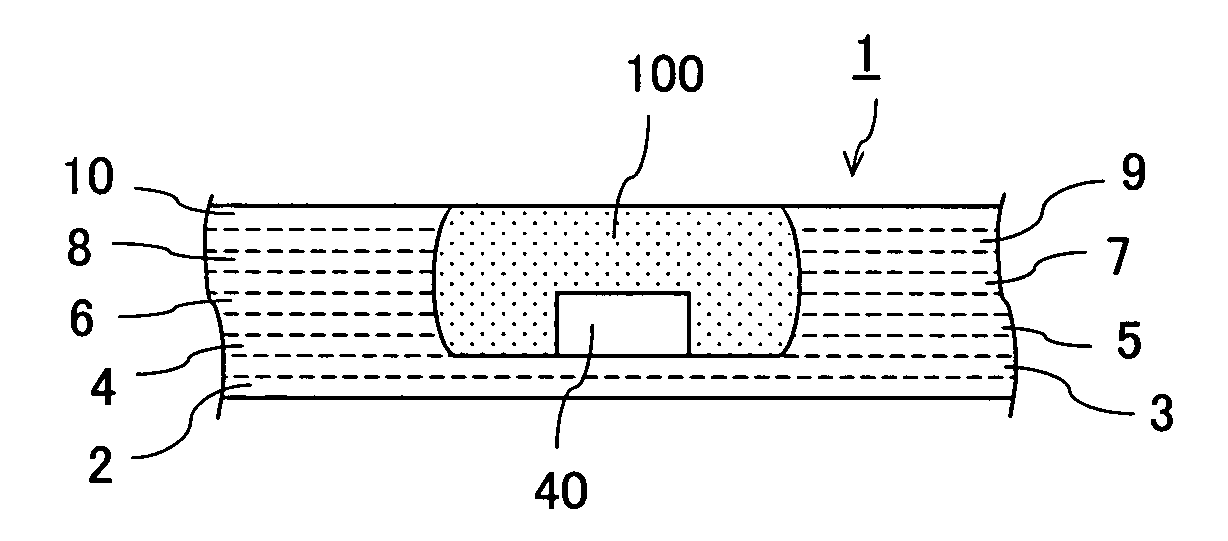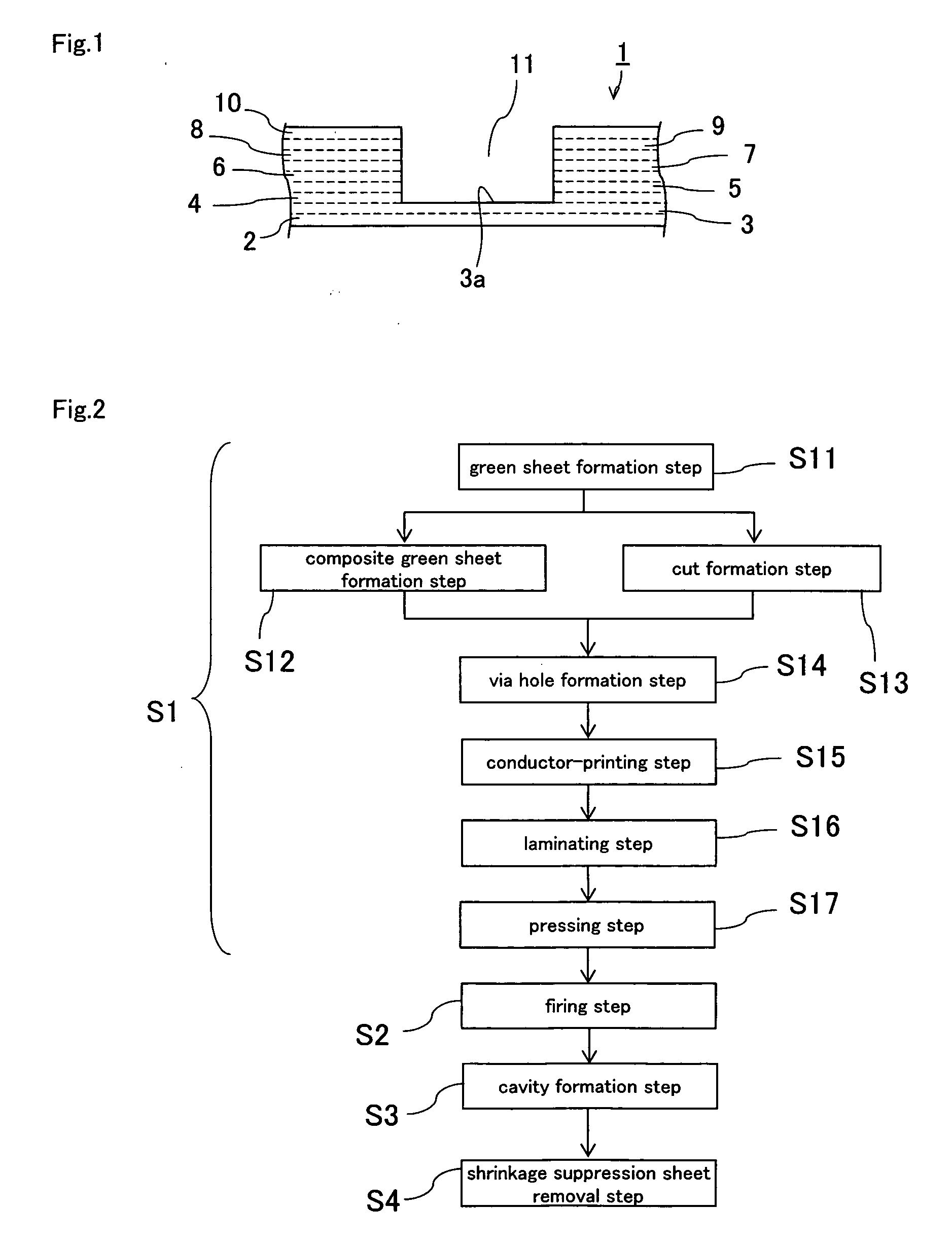Multilayer ceramic substrate
a multi-layer ceramic and substrate technology, applied in the direction of electrical apparatus construction details, transportation and packaging, electrical components association, etc., can solve the problems of not always obtaining satisfactory dimensional accuracy or satisfactory flatness, failing to mount electronic devices on the bottom, and reducing the dimensional accuracy of multi-layer ceramic substrates. , to achieve the effect of sufficiently secure cavity bottom flatness and secured dimensional accuracy
- Summary
- Abstract
- Description
- Claims
- Application Information
AI Technical Summary
Benefits of technology
Problems solved by technology
Method used
Image
Examples
example 1
[0366]In this example, an alumina-glass-based dielectric material was prepared as a material for a ceramic green sheet. A binder and organic solvent were mixed with the material to obtain a mixture, and the mixture was subjected to the doctor blade method to produce a ceramic green sheet having a thickness of 125 μm. On the other hand, a tridymite-silica-based material was prepared as a material for shrinkage suppression. Similarly to the ceramic green sheet material, a binder and organic solvent were mixed with the material to obtain a mixture, and the mixture was subjected to the doctor blade method to produce a shrinkage suppression green sheet having a thickness of 125 μm.
[0367]The ceramic green sheet was formed with a first square through hole having a side of 4 mm using a die. On the other hand, the shrinkage suppression green sheet was similarly punched out using a die to form a first fitting sheet of a square having a side of 4 mm. The first fitting sheet was fitted in the f...
example 2
[0371]In this example, a multilayer ceramic substrate having a multistage cavity was fabricated. The production method set forth in the second embodiment was used herein. The ceramic green sheet and shrinkage green sheet were formed pursuant to Example 1.
[0372]In the multilayer ceramic substrate, the first cavity portion had a side of 5 mm at the opening and a depth of 0.24 mm, and the second cavity portion had a side of 2 mm at the opening and a depth of 0.18 mm. A photograph showing the cross section of the multilayer is shown in FIG. 74 from which it is found that each of the cavity portions has a shape of a drum having a larger opening area at the inside than at the opening.
example 3
[0373]In this example, an alumina-glass-based dielectric material was prepared as a ceramic material for a substrate and mixed with an organic binder and organic solvent to obtain a mixture. The mixture was subjected to the doctor blade method to produce a ceramic green sheet having a thickness of 125 μm
[0374]On the other hand, a tridymite-silica-based material was prepared as a material for shrinkage suppression and mixed with an organic binder and organic solvent similarly to the ceramic material to obtain a mixture. The mixture was subjected to the doctor blade method to produce shrinkage suppression green sheets having a thickness of 110 μm and a thickness of 125 μm, respectively. As a burnable material, the aforementioned ceramic material for the substrate and the resin used when the shrinkage suppression material was formed into a sheet were prepared. The burnable material was dissolved in an organic solvent and the resultant was subjected to the doctor blade method to produce...
PUM
| Property | Measurement | Unit |
|---|---|---|
| distance | aaaaa | aaaaa |
| distance | aaaaa | aaaaa |
| shrinkage | aaaaa | aaaaa |
Abstract
Description
Claims
Application Information
 Login to View More
Login to View More - R&D
- Intellectual Property
- Life Sciences
- Materials
- Tech Scout
- Unparalleled Data Quality
- Higher Quality Content
- 60% Fewer Hallucinations
Browse by: Latest US Patents, China's latest patents, Technical Efficacy Thesaurus, Application Domain, Technology Topic, Popular Technical Reports.
© 2025 PatSnap. All rights reserved.Legal|Privacy policy|Modern Slavery Act Transparency Statement|Sitemap|About US| Contact US: help@patsnap.com



